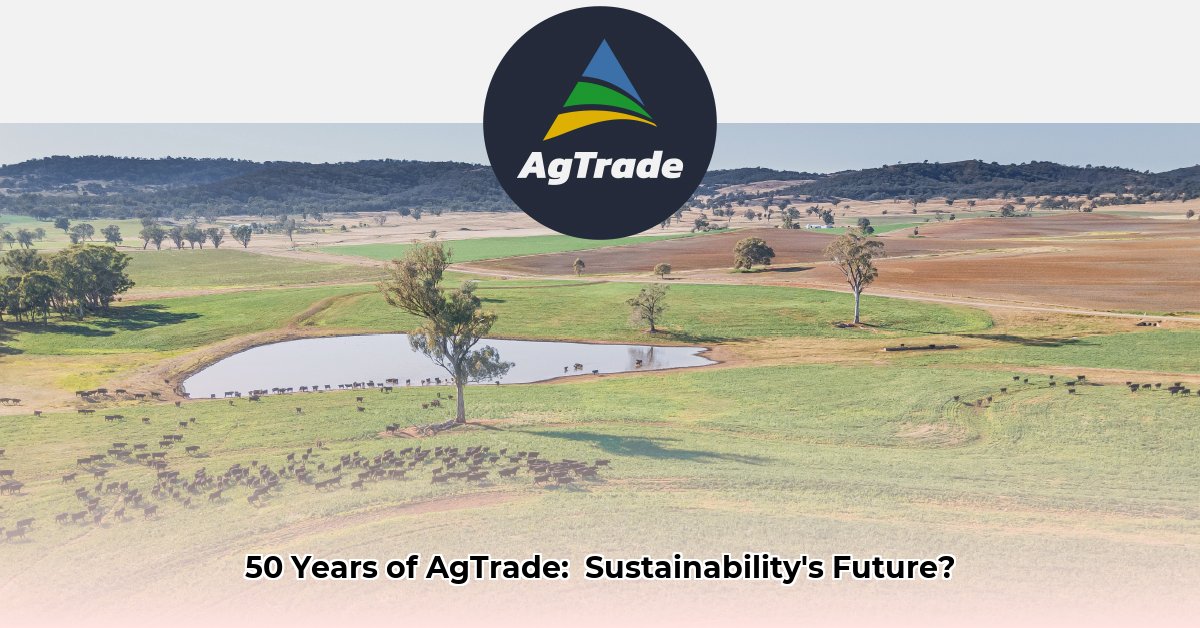
AgTrade, a prominent force in Australian and New Zealand agriculture for half a century, boasts a significant economic footprint. But does its considerable financial success translate into genuine sustainability? This in-depth analysis delves into AgTrade's history, examining its diverse operations and evaluating its sustainability claims against verifiable evidence. We'll explore its successes, shortcomings, and outline a path towards a more sustainable future for the company and the industry as a whole.
AgTrade's Operational Diversification: A Resilient Model?
AgTrade's sustained success over 50 years can be partly attributed to its diversified business model. With operations spanning livestock breeding, cattle feeding, beef production, and animal nutrition, the company has demonstrated resilience in the face of fluctuating market conditions. Their extensive network – encompassing over 15,000 farming partnerships – represents a significant commitment to collaborative supply chains, potentially contributing to their long-term stability. However, the question remains: how does this diversified approach impact environmental and social sustainability?
Assessing AgTrade's Sustainability Claims: A Critical Examination
AgTrade publicly espouses a "triple-bottom-line" approach, emphasizing economic, environmental, and social factors. Yet, a critical analysis reveals a need for greater transparency and quantifiable data to support these claims. While impressive financial contributions are undeniable, concrete evidence regarding carbon emission reductions, improvements in animal welfare, and specific social initiatives remains scant. This lack of readily available, verifiable data renders the "triple-bottom-line" claim somewhat unsubstantiated.
How can we truly assess AgTrade's environmental impact without comprehensive data on greenhouse gas emissions and land use stemming from their large-scale livestock operations? Some experts argue that intensive animal agriculture, even within a collaborative framework, can exacerbate environmental pressures. The sheer scale of AgTrade's operations, while contributing to economic success, may lead to unintended environmental consequences, emphasizing the need for thorough, independent evaluation.
Furthermore, a clearer picture of AgTrade's social impact is necessary. What specific community initiatives does the company support? How does it ensure fair labor practices for its employees? Without detailed information on these aspects, a complete evaluation of the company's sustainability efforts remains impossible.
AgTrade's Sustainability Roadmap: Recommendations for Improvement
True sustainability demands transparency and accountability. AgTrade, along with its partners and stakeholders, must actively pursue the following improvements:
1. Enhanced Transparency and Reporting: AgTrade should immediately publish comprehensive Environmental, Social, and Governance (ESG) reports, detailing specific targets and progress made towards achieving them using transparent metrics. This includes publicly available data on greenhouse gas emissions, water usage, land use, animal welfare indicators, and employee well-being.
2. Collaborative Action Plan: The following actionable framework outlines a phased approach to sustainability, engaging every stakeholder:
| Stakeholder Group | Short-Term Goals (Next 12 Months) | Long-Term Vision (3-5 Years) | Efficacy Metric |
|---|---|---|---|
| AgTrade Leadership | Publish detailed, independently verified ESG reports. | Implement carbon reduction strategies; invest in carbon capture and renewable energy projects. | 100% transparency in reporting; 20% CO2 reduction |
| Investors | Demand transparent reporting and verifiable ESG data. | Hold AgTrade accountable for ambitious sustainability targets (e.g., Net Zero by 2050). | 95% investor alignment with sustainability goals |
| Farming Partners | Implement sustainable farming practices (e.g., reduced tillage, cover cropping). | Prioritize biodiversity and explore carbon credit opportunities through joint ventures. | 80% partner adoption of sustainable practices |
| Consumers | Demand detailed information on product origins and sustainability. | Support companies with verifiable sustainability credentials. | 75% consumer preference shift to sustainable options |
| Governments (Aus/NZ) | Provide financial incentives for sustainable agricultural practices. | Fund research and development in climate-smart agricultural technologies. | Increased government funding for sustainability research |
3. Independent Verification: External audits and certifications should comprehensively and regularly verify AgTrade’s sustainability claims, building trust among stakeholders.
The Future of Sustainable Agribusiness: A Call for Action
The journey towards sustainable agribusiness demands a collaborative effort, transparency, and a commitment to measurable results. For AgTrade, this translates into embracing data-driven decision-making, engaging all stakeholders in this crucial endeavor, and continually refining its sustainability practices. The path forward necessitates continuous improvement and adaptation to ensure economic success does not come at the expense of environmental health and social responsibility. The future of food security and sustainability relies on this collaborative and transparent approach.